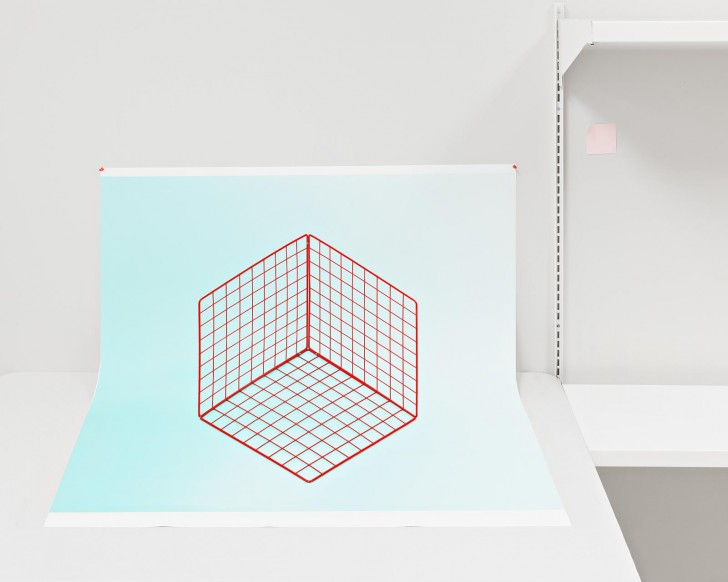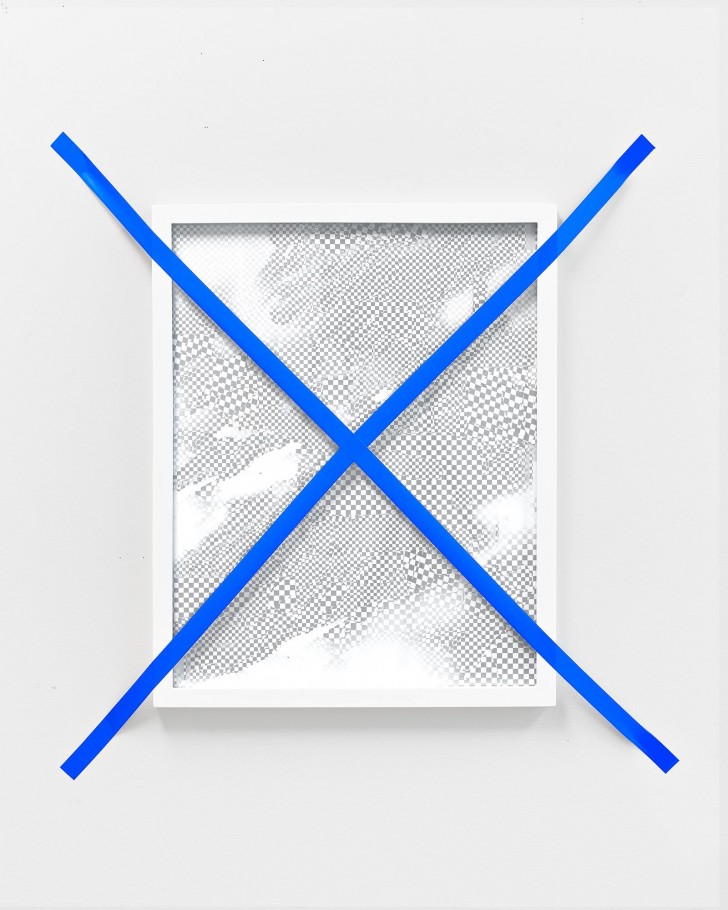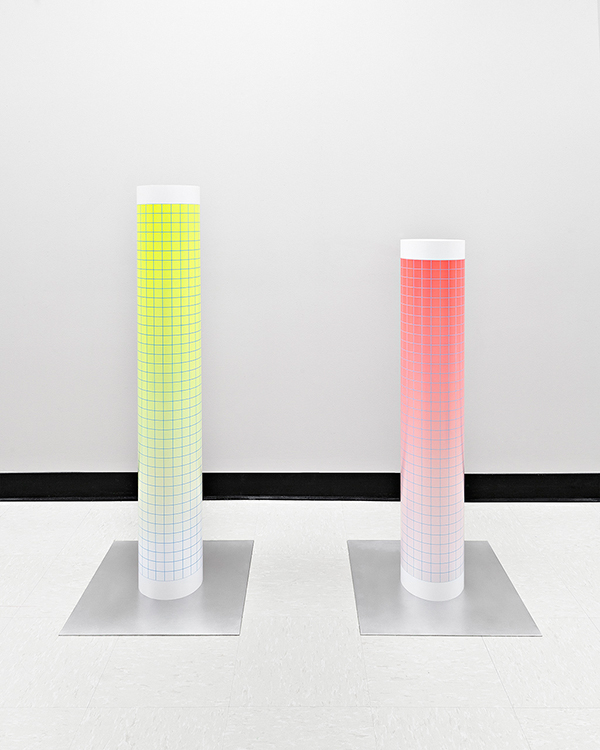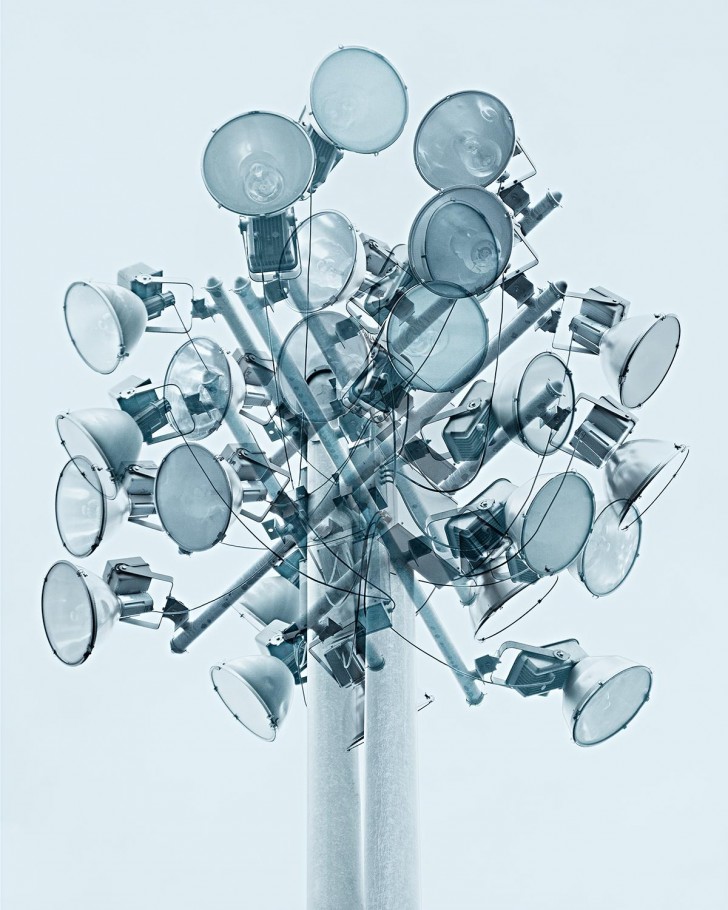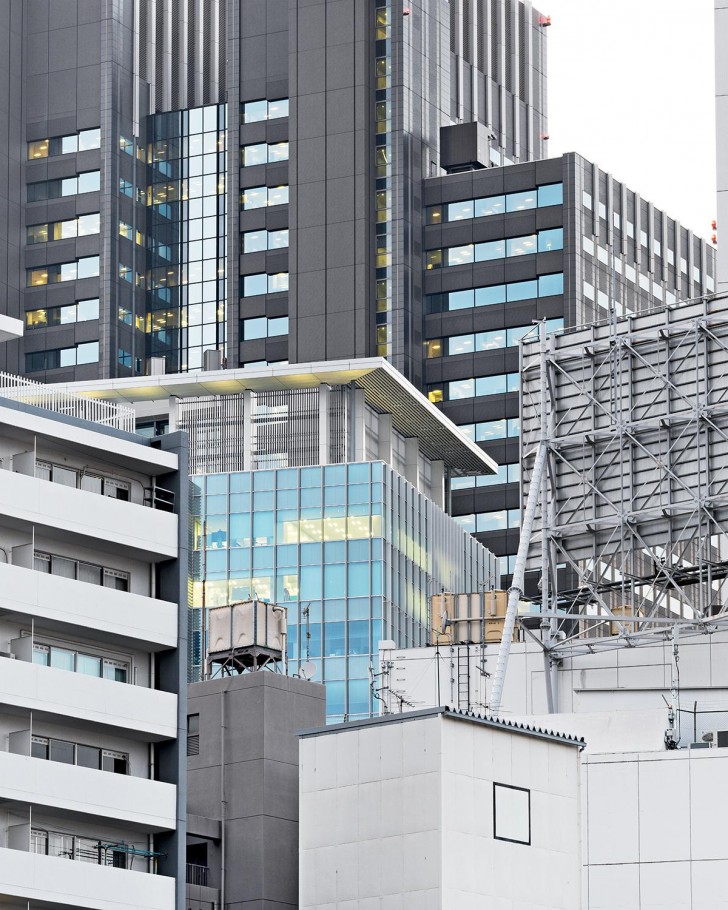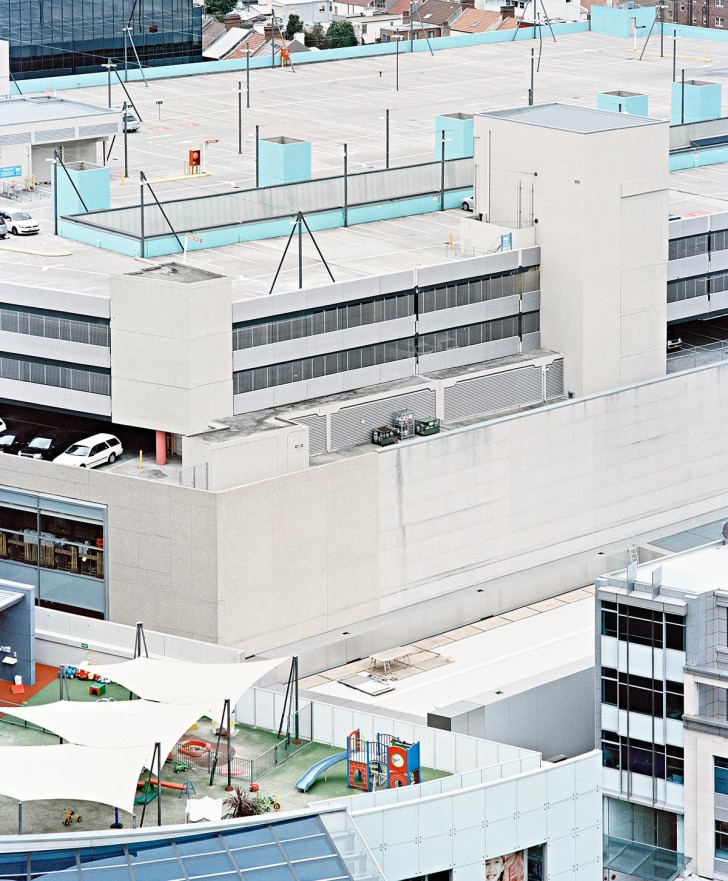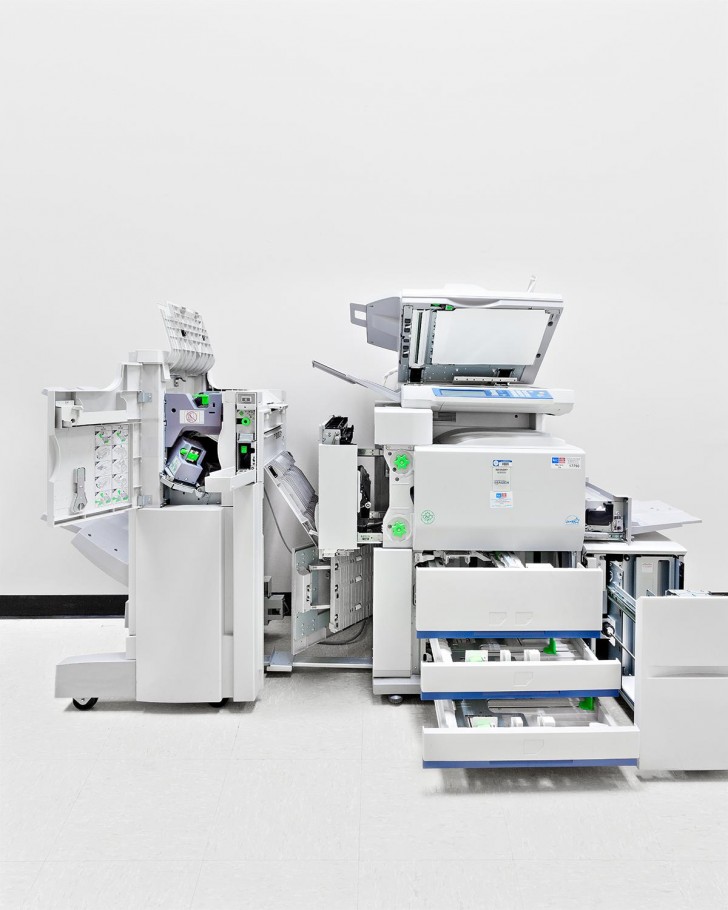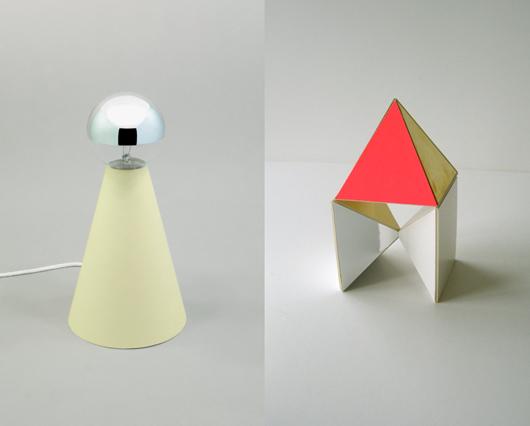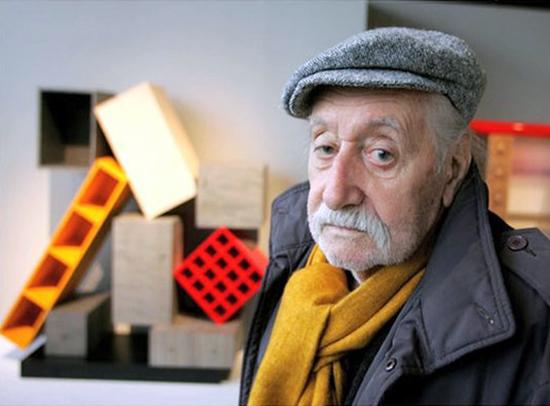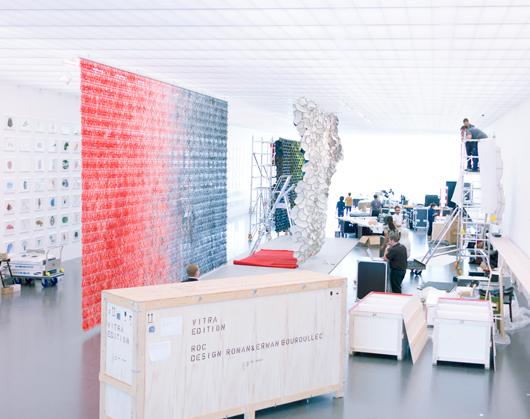
01.21.15
Up and Coming
Daniel Everett, Photographer
Utah-based artist Daniel Everett has a BFA in photography from Brigham Young and a master’s from the School of the Art Institute of Chicago. But it may have been what happened between his two degrees that had the biggest impact on Everett’s career. “I’d done an internship as part of my undergraduate degree with Edward Burtynsky, and after I finished my undergrad, I traveled with him for just over a year,” Everett remembers. “If you know his work, Burtynsky photographs, like, manmade manipulations of the landscape: the largest open-pit copper mine, or the largest oil field. We were always traveling to some superlative location — the biggest, the widest, the greatest — and I got really interested in the in-between places that we passed through: the nondescript, transitory spaces like subway systems, airports, parking garages, and hotels. Spaces that are meant to be legible regardless of the language, and where the aesthetics are governed by function.”
There are other influences or parallels at work in Everett’s work, of course — he cites Walead Beshty and Thomas Demand, while we see hints of Thomas Struth and Adrian Gaut — but like any true artist, Everett synthesizes those influences into something startlingly beautiful and unique. His photographs are often high-contrast, predominantly neutral, anonymous landscapes with pops of primary colors, where the exact location the image was taken is less important than the feeling it might evoke. Where many photographers would cringe to create under the tyranny of fluorescent lights or overcast days, Everett embraces those conditions. “In general, I feel like lighting is too romantic or emotional or dramatic, and I’m interested in minimizing that.”
In general, Everett’s work grapples with big themes, like the comfort and clarity of architecture vs. its inherent alienation and reduction. But the beauty of his work lies in the way it isn’t alienating in the slightest. We first fell for his compositions when we worked on this project, and we knew we had to find out more. Read on for more of Everett’s work, then visit his website for even more.
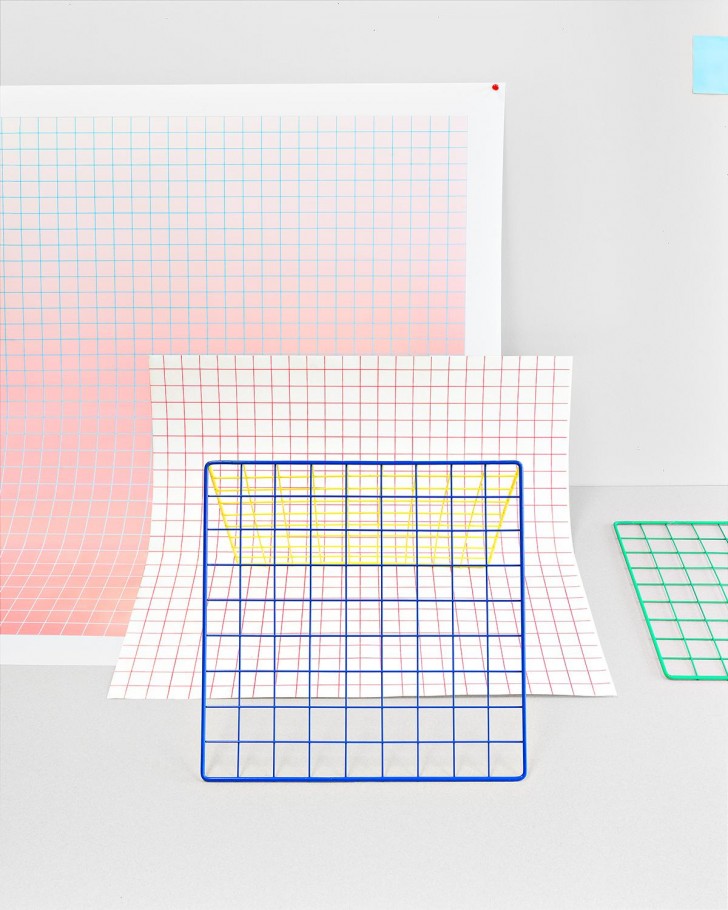
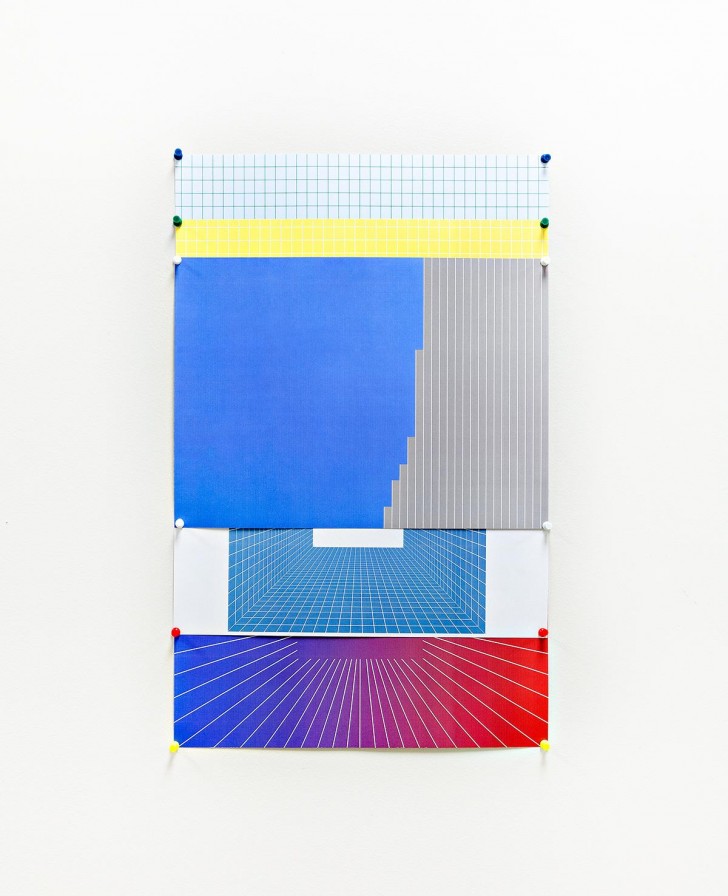
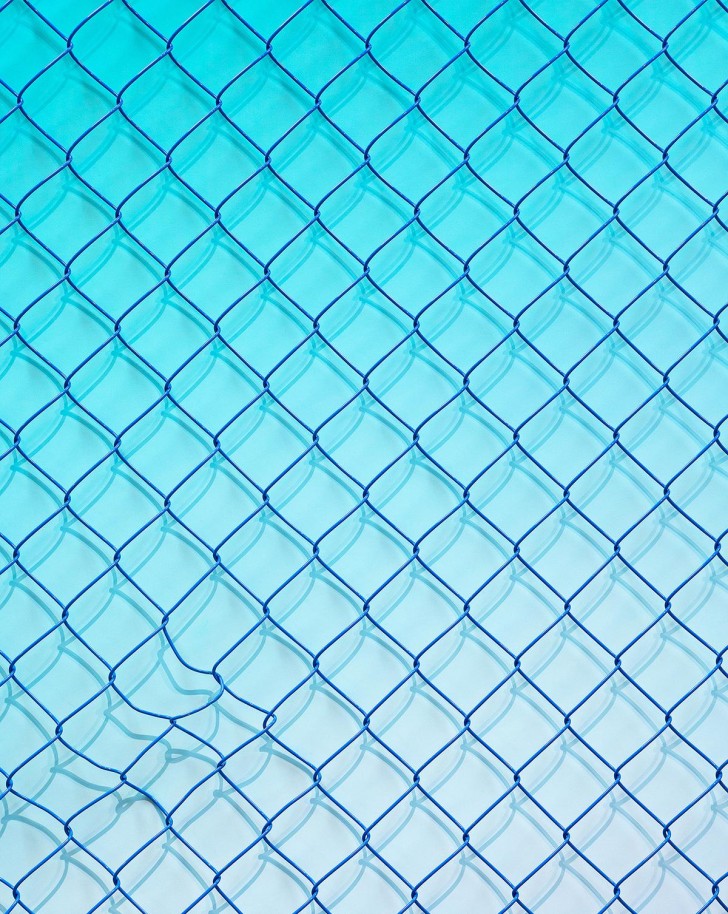 Describe your most recent project and how it was made.
Describe your most recent project and how it was made.
I recently finished a body of work titled New Existence — and by finished, I mean I’m done thinking about it for a while, but I’m not sure it will ever really be done. It’s a fairly open-ended project, incorporating elements of photography, video, sculpture, and installation all revolving around questions about the ideals and aesthetics of progress. As an artist I have a hard time working in series, so I generally don’t. I try to give myself freedom to explore whatever comes to me, regardless of whether or not my brain can make logical sense of the choices my eyes are making. Once I’ve amassed enough work I stand back and attempt to find points of intersection between the individual pieces. I see my work functioning as a loose constellation of somewhat disparate parts building a complicated single tone. These configurations always drift and change over time. One iteration of this work was recently featured in the Foam Magazine Talent Issue and is currently on display at the l’Atelier Néerlandais in Paris and is about to open at the East Gallery in Dubai.
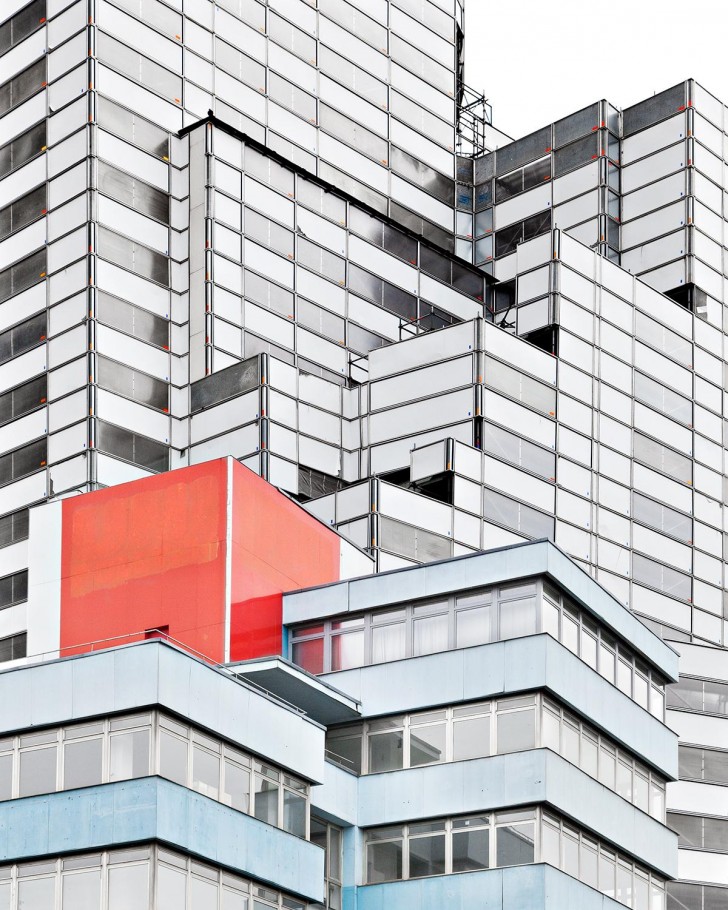
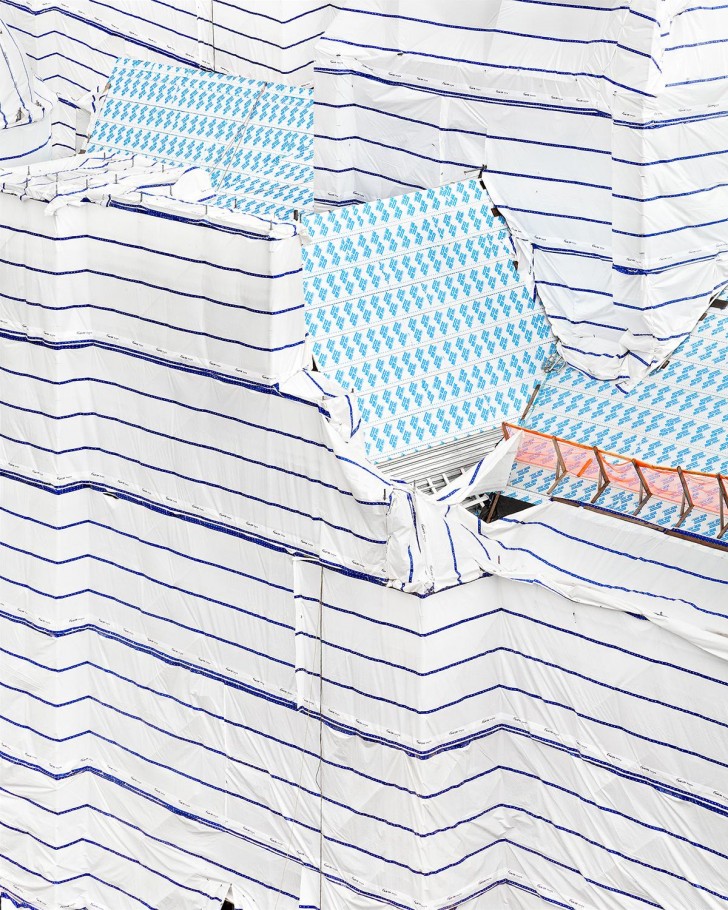
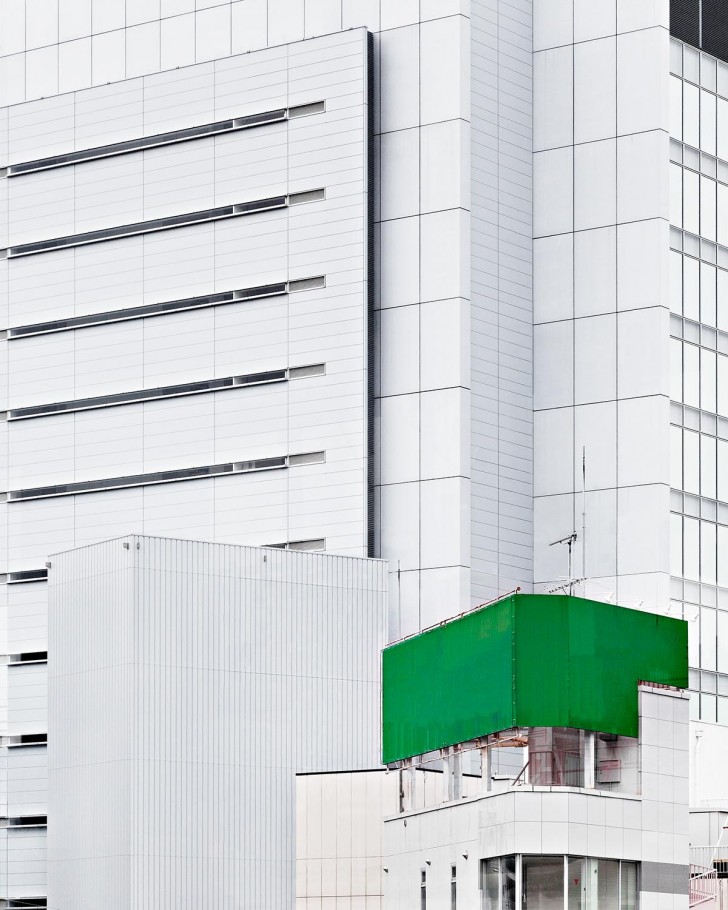 Describe your next project and how you’re currently making it.
Describe your next project and how you’re currently making it.
Right now I’m working on a project dealing with architecture, primarily through photography. In the background of almost everything I make is an underlying interest in architecture and order imposed upon space, but up until now I’ve shied away from dealing with it directly. I think this is because my feelings toward the particular types of structures I photograph are complicated and somewhat ambivalent, and putting together a project feels like defining the relationship in a way that I haven’t felt ready for.
This project comes out of years of stockpiling architectural images as I travel. In my pictures I’m not interested in the specific locations or functions of buildings, and often I will alter them quite drastically. What I’m after, rather, is an idea of order that an image can communicate — one that feels simultaneously inviting and unnerving.
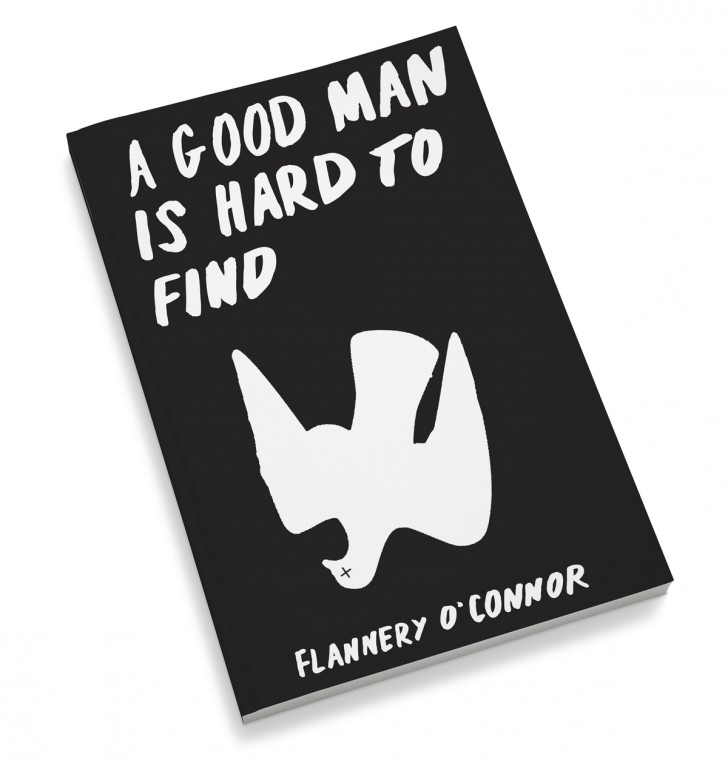 Tell us one thing that’s been inspiring you lately and why.
Tell us one thing that’s been inspiring you lately and why.
Every once in awhile I consciously stop looking at art. I get overwhelmed and feel like everything I see starts to crowd out my own vision. I’m in one of those breaks right now and have been reading quite a bit more as a way of compensating. In particular, I’ve been reading a lot of Flannery O’Connor. I started with a collection of short stories and decided to make my way chronologically through her entire collected works. Because she died so young her body of work is quite concise — just two novels and 32 short stories. I’m amazed at her ability to articulate the nuances and complexity of belief. Her work manages to somehow be both reassuring and terrifying to me. Also, being able to see the entire span of an author’s career and development has felt really informative.
Other than that I’ve been rereading a few books on architectural theory by Le Corbusier. There is a lot of appeal to me in the severity and fervor of his vision even if it feels somewhat misguided in retrospect. Also, I admire anyone willing to quote themselves in their own books.
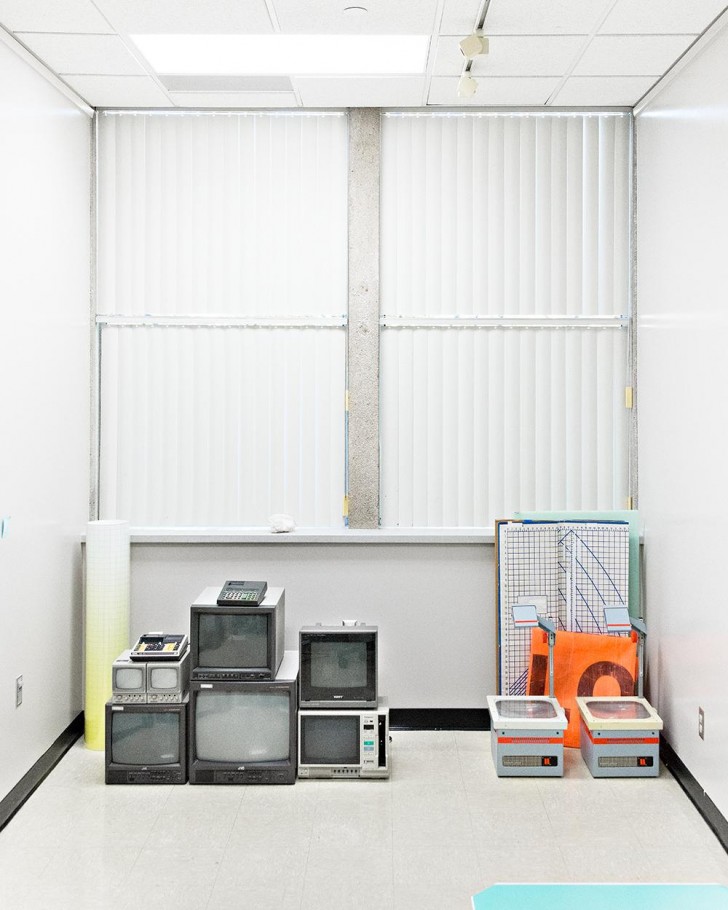
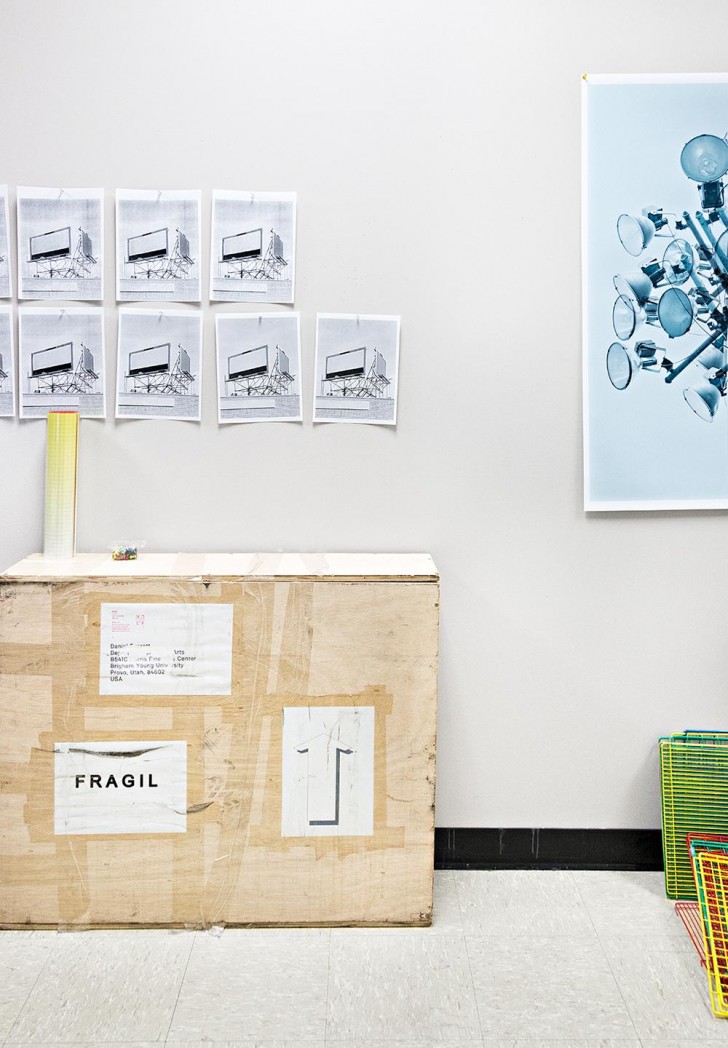
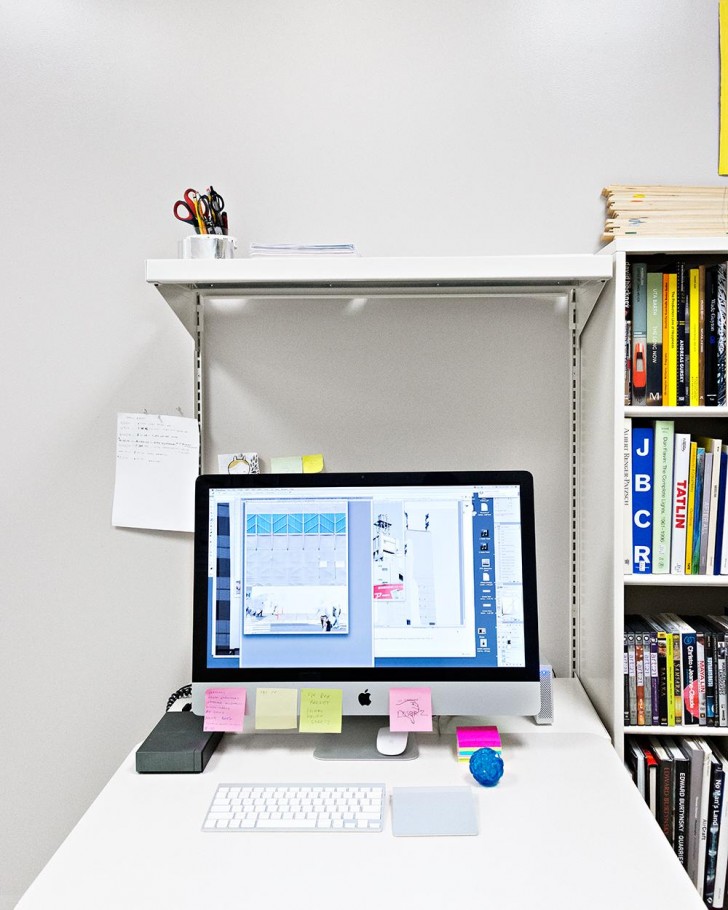 Show us your studio and tell us what you like about it.
Show us your studio and tell us what you like about it.
I am a university professor and I have a studio connected to my office on campus. I also have a studio at home, but I find that I’m better at concentrating when there aren’t arcade games nearby, so I make most of my work at school. I really enjoy the sterility of my space. My studio is a long rectangle with light gray walls and fluorescent lighting which my colleagues tend to find oppressive, but I find strangely calming. My studio is now the backdrop for a large portion of my work and it has become a kind of unifying context for my explorations.
